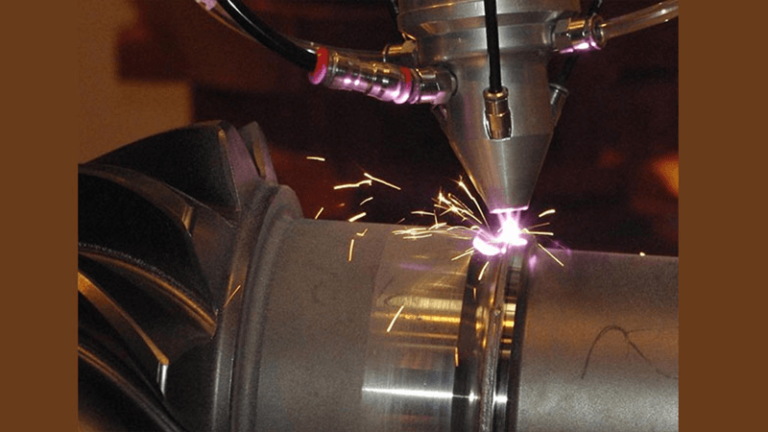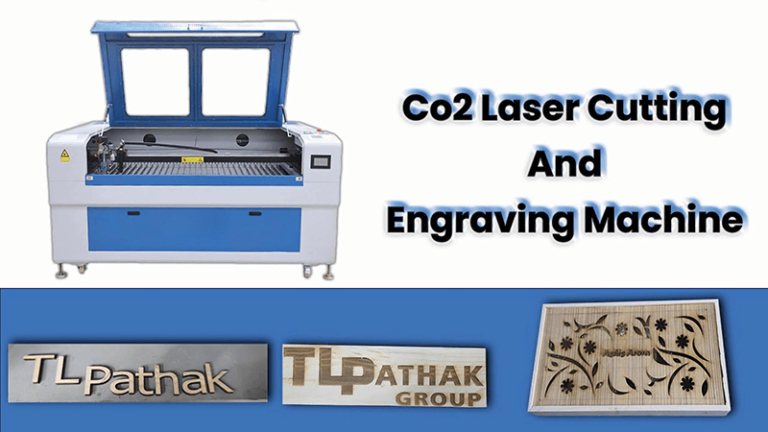Laser cleaning machines are gaining popularity for their efficiency and eco-friendliness. But a question arises: are they safe? In this article, we’ll explore the safety aspects of laser cleaning machines, comparing them to traditional cleaning methods and identifying key safety measures.
Laser cleaning machines are generally safe when used with the proper precautions. By using focused laser beams to clean surfaces, they offer precision without the use of chemicals. However, like any powerful technology, it’s crucial to understand the safety protocols to ensure safe operation.
While laser cleaning offers numerous advantages, safety is a top priority when operating such powerful equipment. In this article, we will dive into the main safety precautions, compare laser cleaning with traditional methods, and explore the necessary protective measures for operators.

What Are the Main Safety Precautions to Take When Using a Laser Cleaning Machine?
Laser cleaning machines offer efficient and eco-friendly cleaning solutions, but like all high-power tools, they require proper handling. What safety measures should be followed when using these machines to avoid accidents?
The main safety precautions when using laser cleaning machines include proper training1, secure setup, and use of protective gear. Operators should follow manufacturer guidelines and ensure that the work area is secure to avoid exposure to laser beams and hazardous particles.
Laser cleaning machines, whether continuous fiber laser2 models like 1.5kW, 2kW, or 3kW, or pulsed lasers such as 100W, 200W, and 300W, come with specific safety protocols. These machines emit high-intensity laser beams that can be harmful if not properly handled. Here is a breakdown of the key safety precautions that should be taken:
-
Operator Training:
Proper training is the cornerstone of safety. Every operator should be well-versed in the operation of the specific laser cleaning machine they are using. Training should include how to operate the machine safely, how to respond to emergency situations, and how to maintain and troubleshoot the equipment. -
Laser Safety Glasses:
Different types of laser beams require different types of safety glasses. For example, a high-power 3kW continuous fiber laser will require more robust eyewear than a 100W pulsed laser. Laser safety glasses3 are specifically designed to block out harmful laser wavelengths and prevent eye damage. -
Safe Work Area:
The workspace should be restricted to prevent unauthorized access. Install barriers, warning signs, and use light curtains to establish a safe perimeter around the laser. Operators should always verify that the laser cleaning area is free from reflective surfaces, as laser beams can scatter and cause unintended exposure. -
Ventilation and Exhaust:
The cleaning process can produce fumes and particles, especially when dealing with metals or coatings. Ensure that the workspace is equipped with an exhaust system4 to remove harmful particles and gases. Proper ventilation helps to protect the operator from inhaling any harmful substances that may be released during the cleaning process. -
Emergency Stop Mechanism:
Every laser cleaning machine should be equipped with an emergency stop button5 that allows operators to quickly halt the machine if something goes wrong. This feature ensures that, in the case of malfunction or emergency, the operator can prevent further damage or risk.
Here's a table summarizing the main safety precautions:
| Safety Measure | Description | Examples/Equipment |
|---|---|---|
| Operator Training | Comprehensive training on laser machine operation, maintenance, and emergency response. | Certified training programs, operator manuals. |
| Laser Safety Glasses | Protective eyewear to shield eyes from harmful laser radiation. | Glasses rated for specific laser wavelengths. |
| Safe Work Area | Secured area to prevent accidental exposure to laser beams. | Barriers, safety signs, light curtains. |
| Ventilation and Exhaust | Proper ventilation to remove hazardous fumes and particles. | Exhaust fans, air filtration systems. |
| Emergency Stop Mechanism | Quick response to halt machine operation in an emergency. | Emergency stop button, automatic shut-off. |

How Does Laser Cleaning Compare to Traditional Methods in Terms of Safety?
Traditional cleaning methods like sandblasting6, abrasive cleaning, or chemical solvents pose risks to both operators and the environment. How does laser cleaning measure up in terms of safety, especially when compared to these methods?
Laser cleaning is a safer alternative to traditional methods like sandblasting and chemical cleaning. Unlike sandblasting, it produces no hazardous waste or chemicals, and it’s less likely to cause injury due to its non-contact nature. This makes laser cleaning a safer choice overall.
When comparing laser cleaning to traditional methods, several safety advantages stand out. Traditional cleaning methods, such as sandblasting or using abrasive materials, can generate dangerous dust clouds and particles. These can be harmful if inhaled and can lead to respiratory issues. Moreover, these methods often require the use of chemical solvents7, which can be toxic and hazardous to the operator’s health.
Laser cleaning, on the other hand, is a non-contact process8, meaning there’s less risk of injury or accidents caused by physical contact with the cleaning material. Fiber lasers, like the 2kW continuous model, produce a highly focused beam that vaporizes the surface contaminants without causing harm to the underlying material. This process eliminates the need for abrasive or chemical cleaning agents, making it both safer for the operator and better for the environment.
Additionally, the clean nature of laser cleaning eliminates the hazardous waste typically generated in other methods. For instance, sandblasting can cause surface wear and contamination, while chemical cleaning methods produce toxic waste that must be properly disposed of. Laser cleaning produces no chemical residues, only vaporized material, and this can be easily filtered and disposed of, making it an environmentally friendly process9.
Furthermore, lasers do not create excessive heat or physical force, which reduces the risk of damage to the object being cleaned. For example, when using a 1.5kW laser cleaning machine, operators can clean delicate surfaces without worrying about warping or damaging the substrate.
Here’s a comparison table to highlight the differences:
| Cleaning Method | Safety Concerns | Laser Cleaning Advantages |
|---|---|---|
| Sandblasting | Risk of inhaling dust and particles. May cause respiratory issues. | Non-contact cleaning, no dust generation. |
| Chemical Cleaning | Exposure to toxic chemicals, which can lead to health hazards. | No chemicals involved, more eco-friendly. |
| Laser Cleaning | Risk of laser exposure to eyes and skin, requiring protective gear. | No hazardous waste, minimal exposure risk with safety protocols. |
| Abrasive Cleaning | Risk of surface damage and physical injury. | Precise cleaning without damaging delicate surfaces. |

Are There Any Specific Protective Gear Requirements for Operating a Laser Cleaning Machine?
Given the high intensity of laser beams, proper protective gear10 is crucial for the safety of operators. What specific gear is required when using a laser cleaning machine?
Operators must wear laser safety glasses11, protective gloves, and flame-resistant clothing when using a laser cleaning machine. The type of gear depends on the power of the laser machine and the material being cleaned.
Given the intense laser radiation emitted by machines like the 3kW continuous fiber laser and the 300W pulsed laser12, the use of protective gear is non-negotiable. Operators must follow strict gear protocols to prevent accidents and ensure safety during the cleaning process.
1. Laser Safety Glasses:
These are essential to protect the eyes from laser radiation. The type of glasses required depends on the wavelength and power of the laser machine being used. For instance:
- 3kW Continuous Fiber Laser: Requires glasses that filter out high-intensity laser radiation at the specific wavelength of the machine.
-
100W Pulsed Laser: Requires glasses suited for lower intensity but still powerful laser radiation.
The glasses should cover both direct and scattered laser radiation, preventing any potential eye damage.
2. Protective Gloves:
Laser cleaning machines can produce harmful radiation and physical debris. Wearing gloves protects the operator’s hands from burns or cuts that might result from handling metal debris or high temperatures. Additionally, gloves protect against contamination from fumes.
3. Flame-Resistant Clothing:
Operators should wear flame-resistant clothing, particularly when working with high-powered laser machines. Lasers like the 2kW or 3kW continuous fiber lasers can create localized heat, and it's important to prevent potential burns.
4. Hearing Protection:
Depending on the power of the laser and the type of cleaning, noise levels can be significant. For machines like the 300W pulsed laser, operators may need ear protection to avoid hearing damage from high decibel levels.
Here’s a table summarizing the protective gear requirements for various laser machines:
| Laser Machine Type | Required Gear | Purpose |
|---|---|---|
| 1.5kW Continuous Fiber | Laser safety glasses, protective gloves, flame-resistant clothing | Protects from laser radiation, heat, and debris. |
| 2kW Continuous Fiber | Laser safety glasses, protective gloves, flame-resistant clothing | Protects from higher intensity laser radiation. |
| 3kW Continuous Fiber | Laser safety glasses, protective gloves, flame-resistant clothing | Maximum protection against high-intensity lasers. |
| 100W Pulsed Laser | Laser safety glasses, gloves, ear protection | Prevents eye damage, skin burns, and hearing loss. |
| 200W Pulsed Laser | Laser safety glasses, gloves, ear protection | Protection from pulsed laser bursts and debris. |
| 300W Pulsed Laser | Laser safety glasses, gloves, ear protection, flame-resistant clothing | Safeguards against laser radiation, high temperatures, and noise. |

Can Laser Cleaning Machines Be Used in Outdoor Environments?
Laser cleaning machines are typically used in controlled indoor environments, but can they be safely used outdoors? Let’s explore the challenges and considerations of using these machines in an open-air setting.
Yes, laser cleaning machines can be used outdoors, but there are challenges like weather conditions13 and power supply14 that need to be addressed. Proper setup and safeguards are essential to ensure safe and effective operation in outdoor environments.
While laser cleaning machines are predominantly used indoors, they can also be utilized in outdoor environments, though certain precautions must be taken. For example, high-powered machines like the 3kW continuous fiber laser15 or even 200W pulsed lasers16 require stable power sources. Outdoors, operators must ensure that the power supply is secure and protected from weather elements such as rain or wind, which could affect the machine's performance or even damage its components.
1. Power Supply Stability:
Outdoor environments often present challenges when it comes to maintaining a consistent power supply. Laser machines like the 3kW fiber laser need a stable power source to operate effectively. When used outdoors, generators or external power systems must be able to handle these demands.
2. Weather Protection:
Lasers are sensitive to weather conditions. Rain, dust, and wind can interfere with the machine’s functioning, potentially leading to malfunctions or reduced performance. A weatherproof shelter or covering should be used to protect the machine from these elements.
3. Security and Safety Barriers:
When using laser cleaning outdoors, extra care should be taken to secure the area. Laser beams can be dangerous if scattered, so it’s essential to use safety barriers and ensure that the public is kept at a safe distance.
| Outdoor Consideration | Required Action | Impact |
|---|---|---|
| Power Supply | Ensure stable, weather-resistant power source. | Prevents power interruptions and machine failure. |
| Weather Protection | Use weatherproof covers and enclosures. | Protects the machine from environmental factors. |
| Safety Barriers | Set up physical barriers around the working area. | Prevents accidental exposure to the laser beam. |

2025 Hot Selling Laser Cleaning Machine by Kirin Laser
2025 Hot Selling Laser Cleaning Machines by Kirin Laser offer a range of advanced, efficient solutions for various industrial cleaning needs. The 100w-300w Pulsed Laser Cleaning Machine is perfect for those seeking a versatile, high-performance option, ideal for rust removal, surface cleaning, and paint stripping. With power options ranging from 100w to 300w and an affordable price range of $3,715 to $7,860 USD, this machine ensures excellent results with minimal maintenance, making it a must-have for industries that require precise and eco-friendly cleaning solutions.
Kirin Laser also presents the 1000w-3000w CW Fiber Laser Cleaning Machine, designed for more intensive cleaning tasks. This model is equipped with continuous wave fiber laser technology, offering power from 1000w to 3000w and a price range of $2,315 to $4,525 USD. Ideal for industrial applications that demand powerful, efficient cleaning of larger surfaces or tougher contaminants, it guarantees high performance and durability, making it the perfect choice for businesses looking to invest in reliable, cutting-edge cleaning technology.
Conclusion
Laser cleaning machines, when used correctly, are safe and efficient tools for cleaning various materials. They offer numerous advantages over traditional cleaning methods, especially in terms of safety and environmental impact. However, operators must adhere to strict safety guidelines and use the appropriate protective gear to ensure safe operation. With the right precautions, laser cleaning can be successfully used both indoors and outdoors, making it a versatile and sustainable option for many industries.
If you are looking for laser cleaning machines17, do not hesitate to contact us to get your best solutions and products for your business or applications.
-
Understand why proper training is essential for the safe operation of laser cleaning machines. ↩
-
Learn about the different types of fiber laser cleaning machines and their associated safety protocols. ↩
-
Discover why different laser types require specific safety glasses and how to choose the right ones. ↩
-
Learn about the importance of proper ventilation and exhaust systems in laser cleaning operations. ↩
-
Understand the importance of emergency stop features in laser safety and operator protection. ↩
-
Understand the environmental and health risks associated with traditional sandblasting cleaning methods. ↩
-
Learn about the hazards of chemical solvents used in traditional cleaning methods and their effects on health. ↩
-
Discover the safety benefits of non-contact laser cleaning over traditional methods. ↩
-
Understand why laser cleaning is considered an environmentally friendly cleaning method compared to traditional methods. ↩
-
Learn about the proper protective gear required for safely operating a laser cleaning machine. ↩
-
Understand why laser safety glasses are crucial for protecting the eyes from harmful laser radiation. ↩
-
Learn about the safety gear and measures needed for operating a pulsed laser, such as the 300W model. ↩
-
Understand how weather elements like rain and dust can affect the operation of laser cleaning machines. ↩
-
Learn about the power stability needs for operating laser cleaning machines in outdoor environments. ↩
-
Discover how to properly use a high-power 3kW laser cleaning machine in outdoor environments. ↩
-
Understand the specific challenges of using 200W pulsed lasers in outdoor settings. ↩
-
Know more about laser cleaning machine and choose your best products here. ↩







